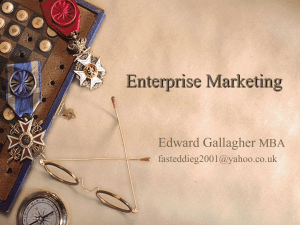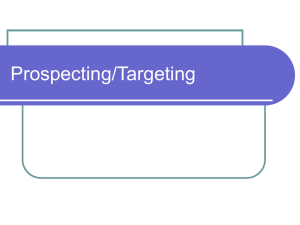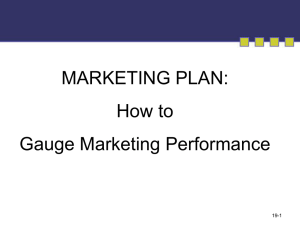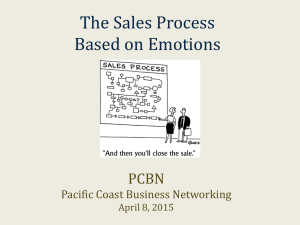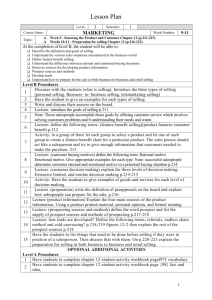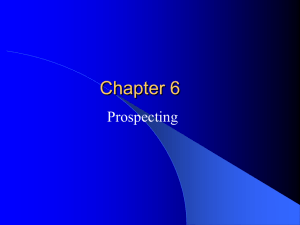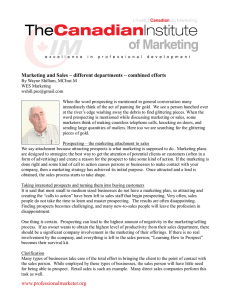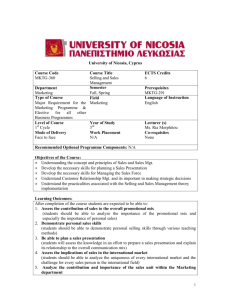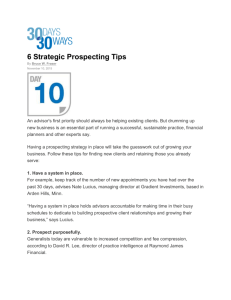This is the fifth of several installments of a new book, called
advertisement
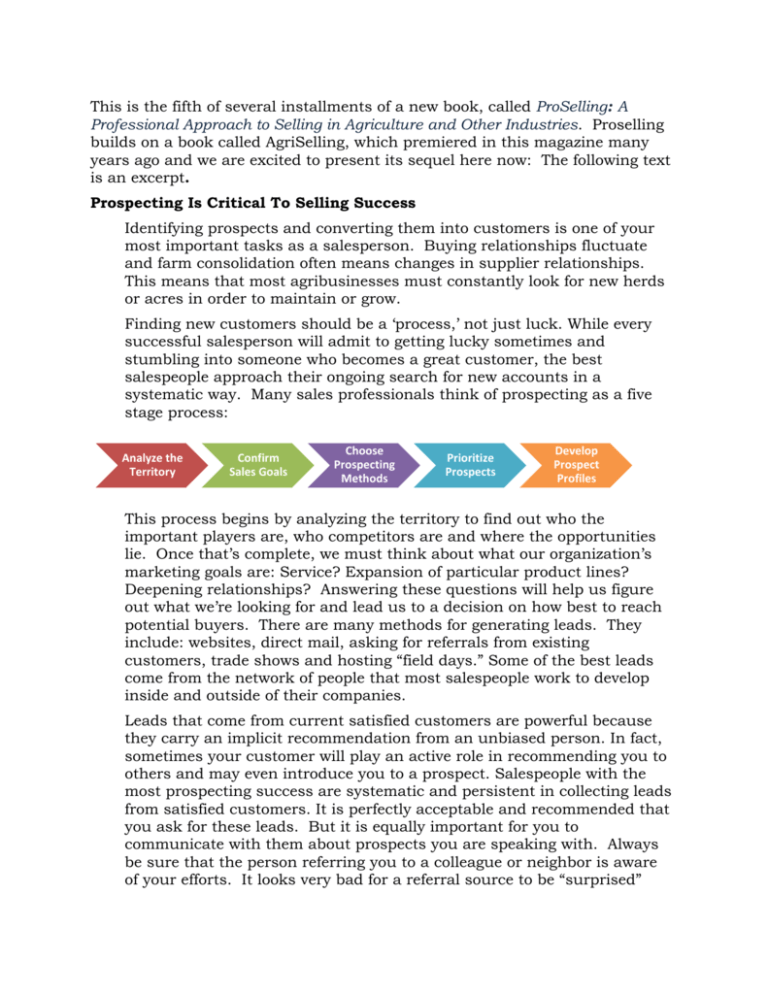
This is the fifth of several installments of a new book, called ProSelling: A Professional Approach to Selling in Agriculture and Other Industries. Proselling builds on a book called AgriSelling, which premiered in this magazine many years ago and we are excited to present its sequel here now: The following text is an excerpt. Prospecting Is Critical To Selling Success Identifying prospects and converting them into customers is one of your most important tasks as a salesperson. Buying relationships fluctuate and farm consolidation often means changes in supplier relationships. This means that most agribusinesses must constantly look for new herds or acres in order to maintain or grow. Finding new customers should be a ‘process,’ not just luck. While every successful salesperson will admit to getting lucky sometimes and stumbling into someone who becomes a great customer, the best salespeople approach their ongoing search for new accounts in a systematic way. Many sales professionals think of prospecting as a five stage process: Analyze the Territory Confirm Sales Goals Choose Prospecting Methods Prioritize Prospects Develop Prospect Profiles This process begins by analyzing the territory to find out who the important players are, who competitors are and where the opportunities lie. Once that’s complete, we must think about what our organization’s marketing goals are: Service? Expansion of particular product lines? Deepening relationships? Answering these questions will help us figure out what we’re looking for and lead us to a decision on how best to reach potential buyers. There are many methods for generating leads. They include: websites, direct mail, asking for referrals from existing customers, trade shows and hosting “field days.” Some of the best leads come from the network of people that most salespeople work to develop inside and outside of their companies. Leads that come from current satisfied customers are powerful because they carry an implicit recommendation from an unbiased person. In fact, sometimes your customer will play an active role in recommending you to others and may even introduce you to a prospect. Salespeople with the most prospecting success are systematic and persistent in collecting leads from satisfied customers. It is perfectly acceptable and recommended that you ask for these leads. But it is equally important for you to communicate with them about prospects you are speaking with. Always be sure that the person referring you to a colleague or neighbor is aware of your efforts. It looks very bad for a referral source to be “surprised” when your prospect calls them to ask about you! Regardless of the method chosen for generating leads, these activities will result in a list of potential customers by name. We need to choose which of these names to call on first. Tools like estimated lifetime value or prospect priority indexes can help with this. Finally, based on those outcomes we can seek to gather information about our “target” prospects, storing that information in some sort of account profile. A good account profile should contain as much pertinent information as possible. You won't know all this information before your first call, but you can uncover a great deal of information by talking to others. Use your initial profile information as a basis for you first few "back grounding" calls with a prospect and to qualify the account. Profiles are particularly important when prospecting for "multi-level" or complex accounts. Many farm businesses today are geographically dispersed, highly integrated, or have several decision makers, approvers, and influencers. When working with multi-level account prospects, keep the following tips in mind: Identify decision makers and influencers as soon as possible - all of them. Ask about (and keep a record of) how success is measured, internally, by different people in the company or business. You must meet each person's business and personal needs. In these more complex business units, you are always selling to a business…but also to different individuals who play very specific roles in the process. Know what the approval process is like. Just understanding the decision making process can become very difficult. Yet to be an effective salesperson, it is critical to understand how the decision gets made, who is involved and what criteria they will be looking for. Prospecting never stops. Even the most experienced salespeople still make cold calls, because talking with the accounts you don't yet serve is the best way to find out how you could improve your sales skills. Prospecting requires planning and strategy, just like any other aspect of the sales process. That’s probably even truer with the challenges of consolidation and increasing customer complexity we’re facing in agribusiness today.
